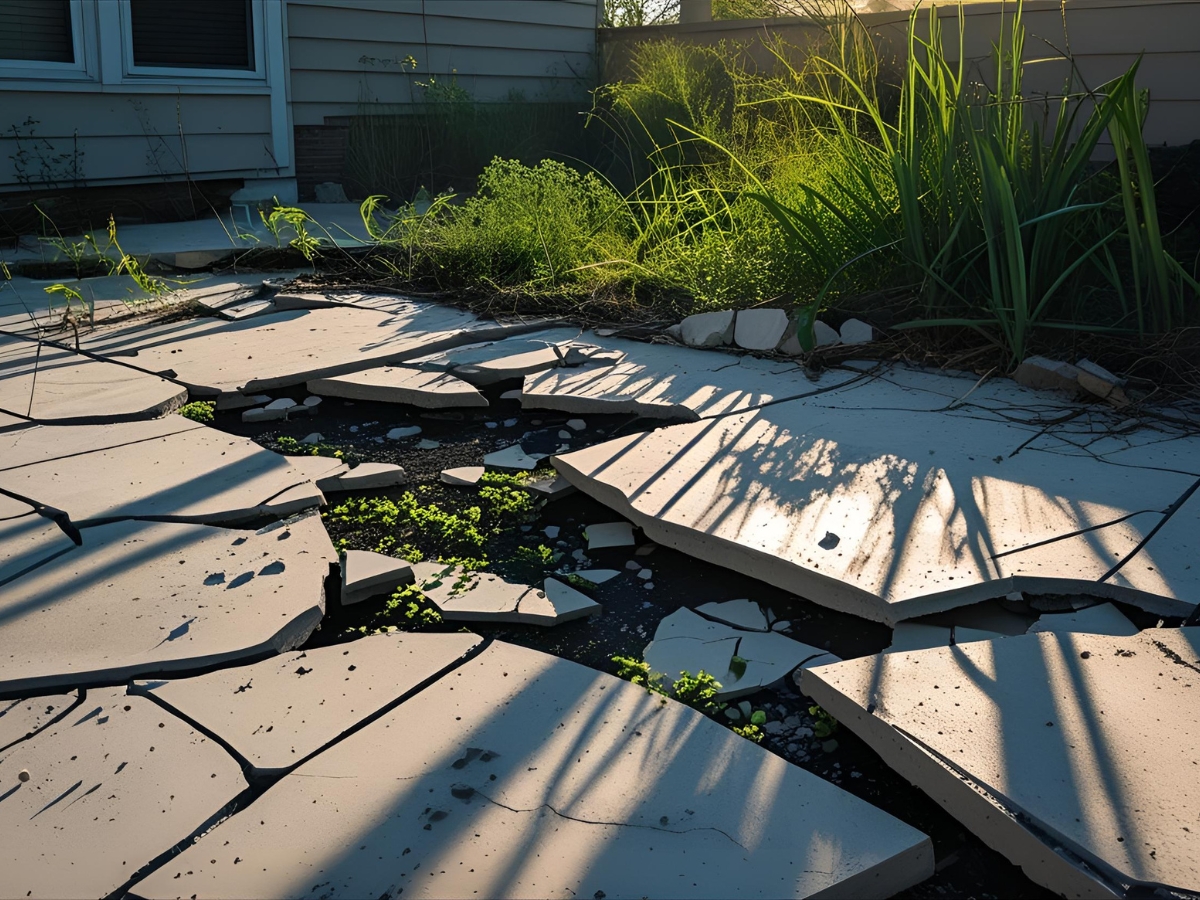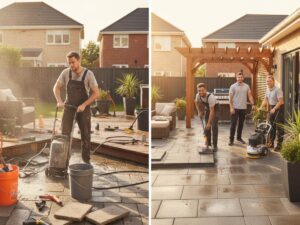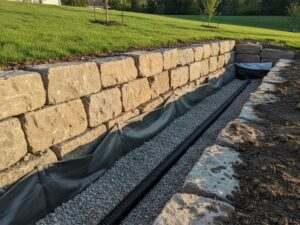Noticing cracks, dips, or uneven surfaces in your patio? A broken patio paver might seem like a minor issue at first, but it often signals a deeper problem that, if left unchecked, can lead to more costly repairs. These problems don’t happen overnight. Problems with pavers, whether caused by improper installation, soil movement, drainage failures, or just general wear and tear, sometimes develop subtly until they compromise the aesthetics and security of your outdoor area. If your patio is no longer the low-maintenance, long-lasting surface you were promised, there’s a reason, and it’s fixable.
In this guide, we’ll walk you through the most common reasons pavers break, and most importantly, what you can do to stop the damage before it spreads. Let’s dive in.
Identify the Causes Behind Broken Patio Pavers
Poor Base Preparation
One of the leading causes of broken patio pavers is insufficient base preparation. If the ground beneath the patio wasn’t properly excavated, compacted, or leveled during installation, it compromises the entire structure. An unstable base allows pavers to shift and settle unevenly, which eventually results in cracks and breakage.
Improper Drainage and Water Accumulation
Water damage is a major contributor to patio paver issues. If drainage is not properly addressed, water will collect beneath the surface and erode the base material. Over time, this leads to sagging areas or broken pavers. These conditions not only damage pavers but also reduce the lifespan of your entire patio system, making timely paver repairs a wise investment.
Climatic Stress and Freeze-Thaw Cycles
Climate plays a significant role in paver longevity. It is common in freeze-prone regions for moisture to infiltrate the sub-base, expand upon freezing, and cause pavers to heave or crack. These cycles, repeated annually, gradually compromise structural integrity. For a detailed understanding, refer to our breakdown on the effects of climate on brick pavers.
Tree Roots and Shifting Soil
Soil movement and invasive tree roots can wreak havoc on even the best-laid patios. As roots grow, they apply pressure from below, lifting or shifting pavers out of place. Similarly, expansive soils that swell or shrink based on moisture levels create voids that destabilize the patio. If not addressed early, these issues often require broken paver replacement.
Heavy Loads and Overuse
Many homeowners unknowingly place excessive weight on patios that were not designed for it. Whether it’s driving over a walkway or placing hot tubs and large furniture on a patio meant for foot traffic, overloading will cause stress fractures. Without proper reinforcement, this added weight leads to broken pavers and structural failure. If you’re dealing with damage from load stress, professional paver patio repair may include installing higher-grade pavers or strengthening the sub-base.
Low-Quality Materials
Not all pavers are created equal. Low-grade products are more likely to crack, fade, or break under pressure. They may have inconsistent thickness or contain weak binding agents, which reduces their durability over time.
Lack of Edge Restraints
Edge restraints are crucial for holding your pavers in place. Without them, pavers can shift outward, creating gaps that lead to instability. This creeping movement increases the chances of cracking, particularly at the edges.
Neglect and Poor Maintenance
It is not uncommon for paver patios to deteriorate due to a lack of basic upkeep. Neglecting to refill joint sand, reseal surfaces, or remove organic matter allows moisture infiltration, weed growth, and joint failure. Over time, these issues lead to increased maintenance costs and the need for broken paver replacement.
How to Prevent Your Patio Paver from Frequent Damage
Below are practical strategies to avoid frequent damage and minimize the need for ongoing paver patio repair.
1. Start With a Strong, Well-Compacted Base
The foundation of your patio is everything. Most cases of broken patio pavers trace back to poor base preparation. A proper installation begins with excavating the area to the correct depth, followed by laying and compacting a thick layer of crushed stone or gravel. This step ensures drainage, load distribution, and overall stability. Certified paver patio contractors will ensure proper excavation, base layering and provide industry-standard services.
2. Ensure Proper Drainage Around and Under the Patio
To prevent water pooling or erosion under your pavers, install a proper drainage system during construction. This might include slope grading, French drains, or even permeable paver systems that allow water to pass through the joints. Even existing paver repairs benefit from retrofitted drainage solutions.
3. Use High-Quality Pavers That Suit the Intended Load
Go with interlocking concrete or natural stone pavers designed to handle the weight and wear of your space. Decorative pavers may look nice, but they can easily crack under pressure, leading to costly repairs. Choose options with high compressive strength and low water absorption to keep your surface strong, stable, and looking great over time.
4. Install Durable Edge Restraints
Edge restraints are crucial for holding the entire system together. Without them, pavers can drift outward, creating gaps and instability at the edges. Plastic edging with stakes, concrete curbing, or even steel edging can prevent movement caused by foot traffic or minor soil shifts.
5. Use Polymeric Sand Between Joints
Joint stabilization is another often-overlooked step. Instead of regular sand, use polymeric sand between the paver joints. Once activated with water, it hardens and locks the pavers in place while resisting weed growth and pest intrusion. This prevents shifting and erosion, two leading causes of paver patio issues. If your current patio shows signs of loose joints, re-sanding the surface and sealing it is a smart preventive measure.
6. Schedule Routine Maintenance
Even the most durable patio requires regular upkeep. Clean the surface periodically to remove debris, moss, and algae that can trap moisture. Reapply sealant every few years to protect against stains and moisture penetration. Most importantly, inspect your patio every season for early signs of wear or movement. Catching issues early minimizes damage and the need for major paver patio repair.
7. Act Fast When You Notice Damage
Delaying repairs only makes problems worse. If you notice a crack, sinking area, or loose section, address it quickly. Professional paver repairs can isolate the problem and fix it without redoing the entire patio. Early intervention through professional paver patio repair services to prevent widespread structural compromise.
Conclusion
Paver patios represent a significant investment in both property value and outdoor usability. It is advisable to work with certified professionals and develop a tailored maintenance strategy to prevent recurring broken patio paver issues. Early identification of risks and prompt intervention can extend the life of your patio while minimizing the frequency and cost of repairs.




